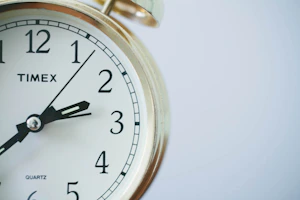Podcast
Questions and Answers
What is the primary trade-off discussed in Chapter 8 of the text?
What is the primary trade-off discussed in Chapter 8 of the text?
- Trade-off between system stability and frequency response
- Trade-off between gain adjustment and compensation networks
- Trade-off between desired transient response and desired steady-state error (correct)
- Trade-off between open-loop and closed-loop transfer functions
In Chapter 9, how were transient and steady-state errors addressed?
In Chapter 9, how were transient and steady-state errors addressed?
- They were directly related to system stability
- They were left unaddressed
- They could be separately specified and designed using compensation networks (correct)
- They were eliminated completely
What advantage does frequency response compensation techniques offer?
What advantage does frequency response compensation techniques offer?
- Direct elimination of transient response
- Faster convergence to steady-state error
- A new vantage point from which to view feedback control systems (correct)
- Greater simplicity in design
Who developed frequency response methods in the 1930s?
Who developed frequency response methods in the 1930s?
What is a situation where frequency response methods have distinct advantages?
What is a situation where frequency response methods have distinct advantages?
In what chapter is the design of feedback control systems through gain adjustment and compensation networks presented from the perspective of frequency response?
In what chapter is the design of feedback control systems through gain adjustment and compensation networks presented from the perspective of frequency response?
What is a key difference between the root locus method and frequency response methods?
What is a key difference between the root locus method and frequency response methods?
What are Bode plots also known as?
What are Bode plots also known as?
How can the frequency response be presented?
How can the frequency response be presented?
How is the magnitude frequency response obtained?
How is the magnitude frequency response obtained?
What are the straight-line approximations of magnitude response called?
What are the straight-line approximations of magnitude response called?
What is the phase response at 45° at?
What is the phase response at 45° at?
What are Bode plots used for?
What are Bode plots used for?
How is the phase frequency response calculated?
How is the phase frequency response calculated?
What does the magnitude frequency response represent?
What does the magnitude frequency response represent?
How can sinusoids be represented in the context of frequency response?
How can sinusoids be represented in the context of frequency response?
How are analytical expressions for frequency response obtained?
How are analytical expressions for frequency response obtained?
In what ways can frequency response be plotted?
In what ways can frequency response be plotted?
How is the phase response calculated in frequency response analysis?
How is the phase response calculated in frequency response analysis?
What is the purpose of calculating the frequency response using a computer program such as the root locus program?
What is the purpose of calculating the frequency response using a computer program such as the root locus program?
How can data for frequency response plots be obtained using vectors on the s-plane?
How can data for frequency response plots be obtained using vectors on the s-plane?
What is the purpose of normalizing and scaling frequency response plots?
What is the purpose of normalizing and scaling frequency response plots?
What does normalization involve in frequency response plots?
What does normalization involve in frequency response plots?
How are frequency response methods used in control systems?
How are frequency response methods used in control systems?
How can the magnitude frequency response of a system be obtained?
How can the magnitude frequency response of a system be obtained?
What advantage do Bode plots have over the Nyquist diagram?
What advantage do Bode plots have over the Nyquist diagram?
What information can frequency response methods provide?
What information can frequency response methods provide?
What graphical aids can be used to obtain the closed-loop frequency response from the open-loop frequency response for transient response analysis and design?
What graphical aids can be used to obtain the closed-loop frequency response from the open-loop frequency response for transient response analysis and design?
Why are frequency response plots obtainable without relying on graphical techniques?
Why are frequency response plots obtainable without relying on graphical techniques?
How does obtaining transfer functions using frequency response compare to transient response testing?
How does obtaining transfer functions using frequency response compare to transient response testing?
Flashcards are hidden until you start studying
Study Notes
Frequency Response Techniques and Applications in Control Systems
- Normalizing and scaling frequency response plots to have the same low-frequency asymptote and break frequency aids in comparing different first- or second-order frequency response plots.
- Normalization involves factoring out a quantity and forming a new frequency variable, while scaling involves dividing the magnitude by a quantity to yield 0 dB at the break frequency.
- Normalization and scaling are used to compare the asymptotic approximation to the actual magnitude and phase plot for a given function.
- Frequency response methods are used for analyzing and designing feedback control systems, providing an alternative to transient response techniques.
- The magnitude frequency response of a system can be obtained by measuring the output amplitude at different frequencies, and the phase response can be obtained by measuring the phase angle difference at different frequencies.
- The frequency response of a system can be represented as a polar plot (Nyquist diagram) or as separate magnitude and phase diagrams (Bode plots).
- Bode plots have an advantage over the Nyquist diagram as they can easily be drawn using asymptotic approximations to the actual curve.
- The Nyquist criterion and Nyquist diagram, or the Nyquist criterion and Bode plots, can be used to determine a system’s stability.
- Frequency response methods provide stability information, transient response information, and tools for analyzing or designing transient response, such as gain margin and phase margin.
- Graphical aids such as M and N circles and the Nichols chart can be used to obtain the closed-loop frequency response from the open-loop frequency response for transient response analysis and design.
- With the availability of computers and software like MATLAB, frequency response plots can be obtained without relying on graphical techniques.
- Obtaining transfer functions using frequency response yields more accuracy than transient response testing and can be done experimentally.
Studying That Suits You
Use AI to generate personalized quizzes and flashcards to suit your learning preferences.




